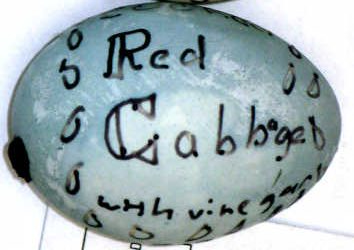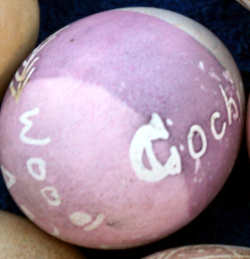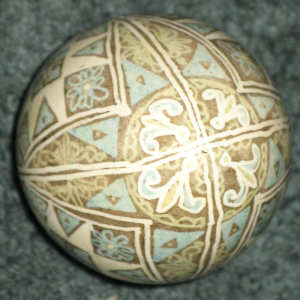Blue and purple dyes can add “zing” to a color scheme, something entirely different from the many “warm” reds, yellows, oranges, and browns.
Less-strong dyes can give a grey or “silver” color, which can add subtle elements in the right color schemes.
Many of the materials that give blue and purple dyes are red in their natural state. This class of dyes are, however, sensitive to acidity or alkalinity– red in acidic conditions and blue in alkaline conditions. Eggshells, which contain large amounts of calcium, are alkaline. Sometimes you can watch as an egg dyes red at first, and then gradually, perhaps over several hours, turns blue.

Bright Blue
The best bright blues, so far, come from red cabbage under acidic conditions. That can be either red cabbage soaked in warm water with vinegar, or from sauerkraut made from red cabbage.
The cabbage blue is one of the few dyes that is not much affected by iron.

Bright Purple
Cochineal – sold as a natural dye for fibers – gives a bright pink when used alone. An iron after-treatment gives purple.
“Soft” Blues
Dyes that give “soft” blues, “lavender”, or silver grey:
- blueberries
- elderberries
- red grapes/purple grape juice
- pomegranate (fruit)
- red raspberries
- dianthus flowers (red carnation/sweet William/“pinks”)
- red hibiscus flowers (sold as hibiscus “tea”)
- black hollyhock flowers
- red or blue pansy flowers
Just smear the crushed fruit or flowers onto the egg.
If you can get 100% grape juice, that works fine. Be aware that many flavors of commercial fruit juices contain only a little of the namesake fruit, and will not be strong enough to use as dyes. Go for frozen raspberries or blueberries instead.
Do you have a favorite recipe for a blue, lavender or purple dye you want to share?
